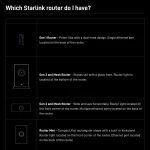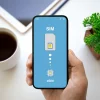BT Changes UK Phone Call Clearing Procedure to Stop Fraudsters

BT are about to make a small but important change, which will significantly reduce the time that a phone call connection is held open (active) after the called party puts their handset down (i.e. such as when you end a voice call). It’s hoped this will make it more difficult for fraudsters to trick people into thinking they’ve called a legitimate service.
Many people are probably unaware that the phone line stays open for a period unless both callers replace their respective handsets (the initiating caller in particular). For example, if you call a friend but only they put their handset down then if they pick it up again later you can still hear them; BT’s network will wait between 2 and 3 minutes before initiating call clearing.
Advertisement
Sadly criminals have learnt to abuse this feature by tricking consumers into contacting their bank or another service. A savvy consumer will typically replace the handset, get the legitimate number for their bank and then make the call and all without realising that the fraudster is still on the line (ready to act as a fake support agent).
The feature itself has always been available on analogue lines because it allows the called party to hang up and subsequently re-answer the call, such as when moving from one extension to another. But the rise of fraud means that this is now being abused.
BT Statement
The proposal is to significantly reduce this call clearing delay time, initially to 10 seconds with an option to reduce it further in the near future if required. Network initiated clearing, following a clear signal from the called party will therefore commence sooner and thus reduce the possibility of the called party being defrauded.
Calls made to analogue lines associated with certain services, e.g. freephone, will continue to be subject to first party clearing. Calls made to emergency numbers will remain as last party release. Calls made to WLR3 Digital (ISDN2 and ISDN30 installations) will also remain unaffected and will continue to be subject to first party clearing.
Apparently the change will be rolled out across BT’s network in a phased approach, starting in early April 2014 with the operators AXE10 telephone exchanges (these account for approximately 6 million exchange lines); it will take until 10th April 2014 to upgrade these.
Mark is a professional technology writer, IT consultant and computer engineer from Dorset (England), he also founded ISPreview in 1999 and enjoys analysing the latest telecoms and broadband developments. Find me on X (Twitter), Mastodon, Facebook, BlueSky, Threads.net and Linkedin.
« ThinkingWISP Extends Wireless Broadband to 90 Percent of Norfolk UK























































Comments are closed